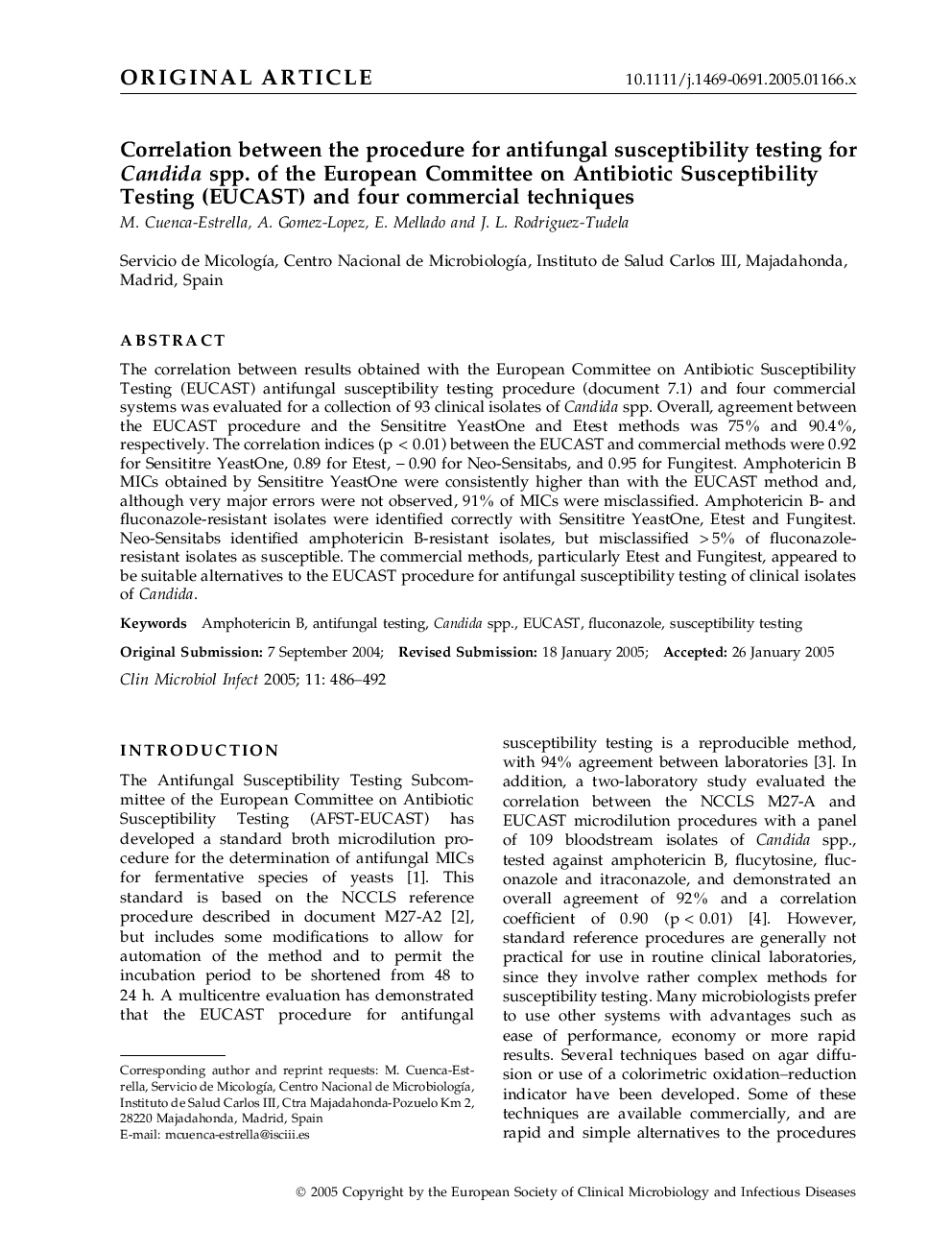| Article ID | Journal | Published Year | Pages | File Type |
|---|---|---|---|---|
| 9276056 | Clinical Microbiology and Infection | 2005 | 7 Pages |
Abstract
The correlation between results obtained with the European Committee on Antibiotic Susceptibility Testing (EUCAST) antifungal susceptibility testing procedure (document 7.1) and four commercial systems was evaluated for a collection of 93 clinical isolates of Candida spp. Overall, agreement between the EUCAST procedure and the Sensititre YeastOne and Etest methods was 75% and 90.4%, respectively. The correlation indices (p < 0.01) between the EUCAST and commercial methods were 0.92 for Sensititre YeastOne, 0.89 for Etest, - 0.90 for Neo-Sensitabs, and 0.95 for Fungitest. Amphotericin B MICs obtained by Sensititre YeastOne were consistently higher than with the EUCAST method and, although very major errors were not observed, 91% of MICs were misclassified. Amphotericin B- and fluconazole-resistant isolates were identified correctly with Sensititre YeastOne, Etest and Fungitest. Neo-Sensitabs identified amphotericin B-resistant isolates, but misclassified > 5% of fluconazole-resistant isolates as susceptible. The commercial methods, particularly Etest and Fungitest, appeared to be suitable alternatives to the EUCAST procedure for antifungal susceptibility testing of clinical isolates of Candida.
Related Topics
Life Sciences
Immunology and Microbiology
Microbiology
Authors
M. Cuenca-Estrella, A. Gomez-Lopez, E. Mellado, J.L. Rodriguez-Tudela,
